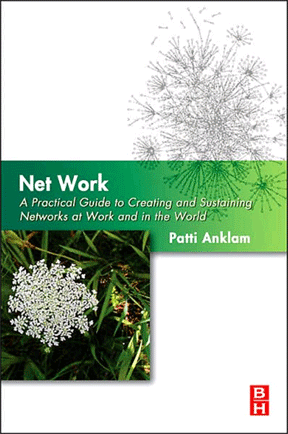Two years ago, I was invited to deliver a keynote about net work at a conference called “Community 2.0.” Immersed as I have been for almost two decades in the work of communities of practice and networks, I expected to hear from and meet practitioners like myself.
Instead, this conference was one of the first of its kind, I think, to address what I am now called the 2nd SM: Customer Social Media. I realized quickly that I had entered new (for me) territory. The pre-conference boot camp, led by colleague Kathleen Gilroy and Sylvia Marino covered the basics of building online communities — customer communities. Although there was content (and vendors) dealing with both customer communities and my 3rd SM (Enterprise SM), it was clearly more focused on working with customer communities.
…Groundswell had just been published; Charlene Li also keynoted some of the key topics from that book, including the social technographic ladder as a strategic tool for engaging customers.
…Twitter was just barely coming of age at this conference, as were many of the themes that have become predominant in this growing field of business and expertise.
…Nancy White (whom I was thrilled to meet f2f, finally, and have to hang out with) created a visual history of communities
…Francois Gossieaux talked about the preliminary results of the 2008 Tribalization of Business study, another eye-opener for me into what was happening on the customer side of communities and social media
…I blogged more details from this conference on my AppGap blog, here and here.
Today, I think of customer SM as the set of Internet tools and applications that are driven by companies’ needs to control their brand, be responsive to customer needs, listen to the marketplace, and develop new products based on customers’ original ideas and feedback. Just a few weeks ago, I came across Altimeter’s Social CRM: The New Rules of Relationship Management, which is a must-read for anyone who wants to understand the many ways that social media have altered business practices. The cases are divided into six areas:
- Marketing
- Sales
- Service and support
- Innovation
- Collaboration
- Customer experience
Each of these has two or more cases, each identified and clarified with real, live cases.
I particularly liked this quote from Paul Greenberg that opens the report:
Social CRM focuses on engaging the customer in a collaborative conversation in order to provide mutually beneficial value in a trusted and transparent business environment. It’s (i.e. Social CRM is) the company’s response to the customer’s ownership of the conversation.
Dion Hinchcliffe has also been on the trail of Social CRM since last August and is very clear that it is a key part of the emerging framework for social business.
This puts the emphasis on conversation, which is in so many ways the social in social media.



Pingback: 3 KMs and 4 SMs — Mathemagenic
Great post, you have pointed out some superb details , I besides believe this s a very excellent website.